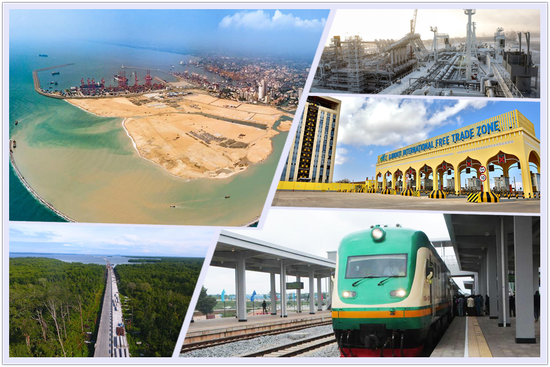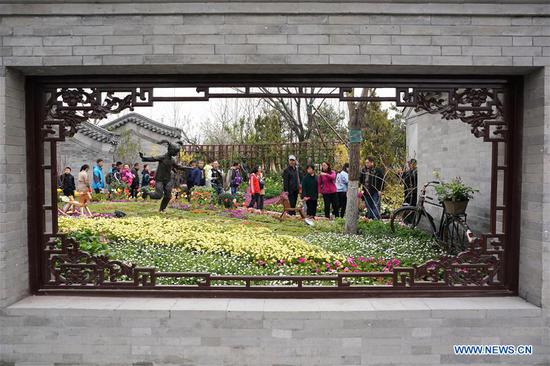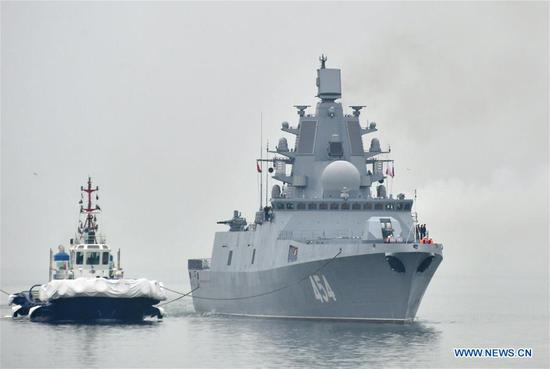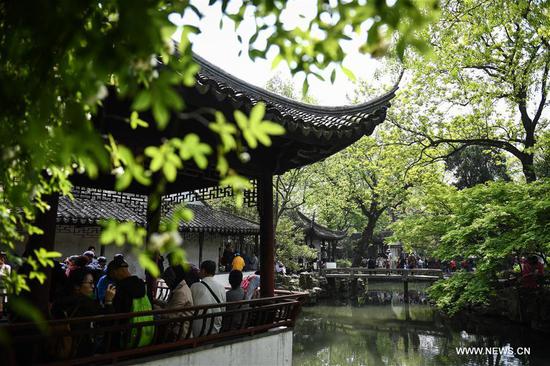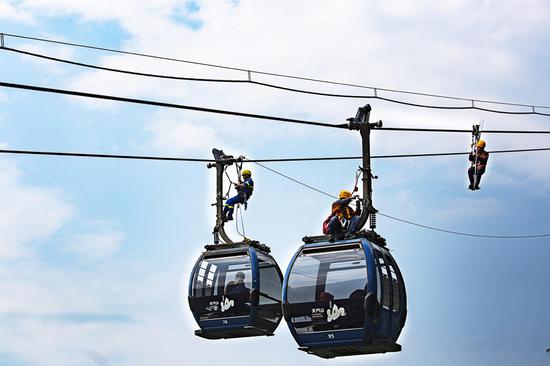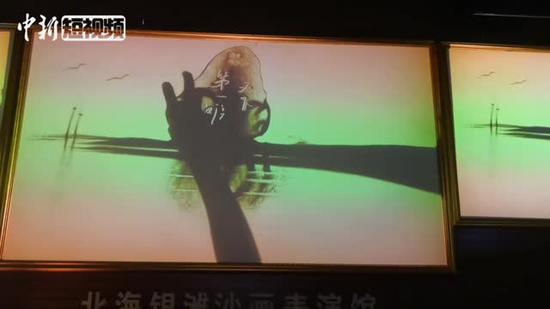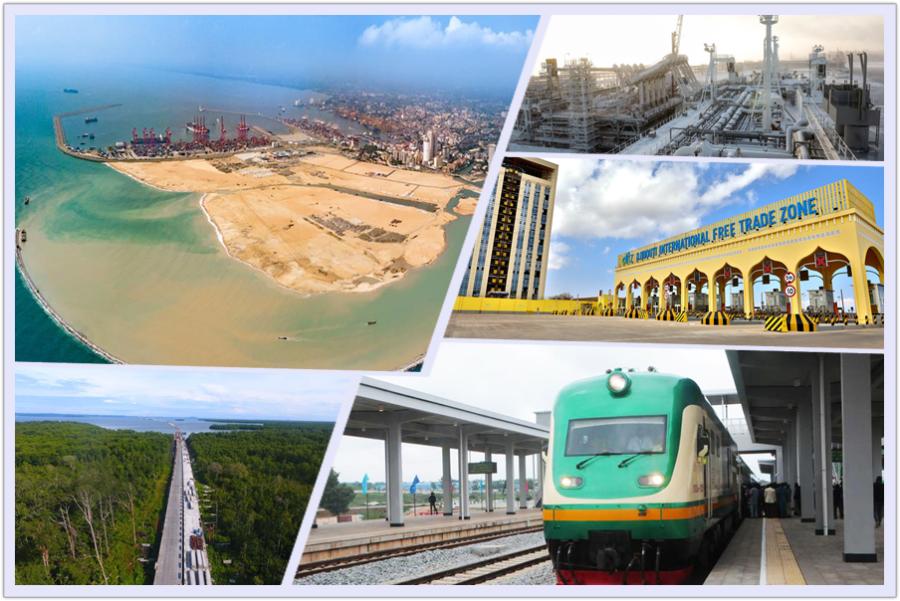
China's Belt and Road Initiative, proposed by President Xi Jinping nearly six years ago, has made practical progress, with 125 countries and 29 international organizations having signed 173 cooperation agreements under the initiative framework as of March 27.
Under the initiative's five cooperation priorities of policy coordination, facilities connectivity, unimpeded trade, financial integration and people-to-people bond, there are a batch of projects, such as transportation construction and industrial infrastructure, in full swing or already having yielded fruitful results.
Here are some of the amazing projects achieved worldwide under the initiative.
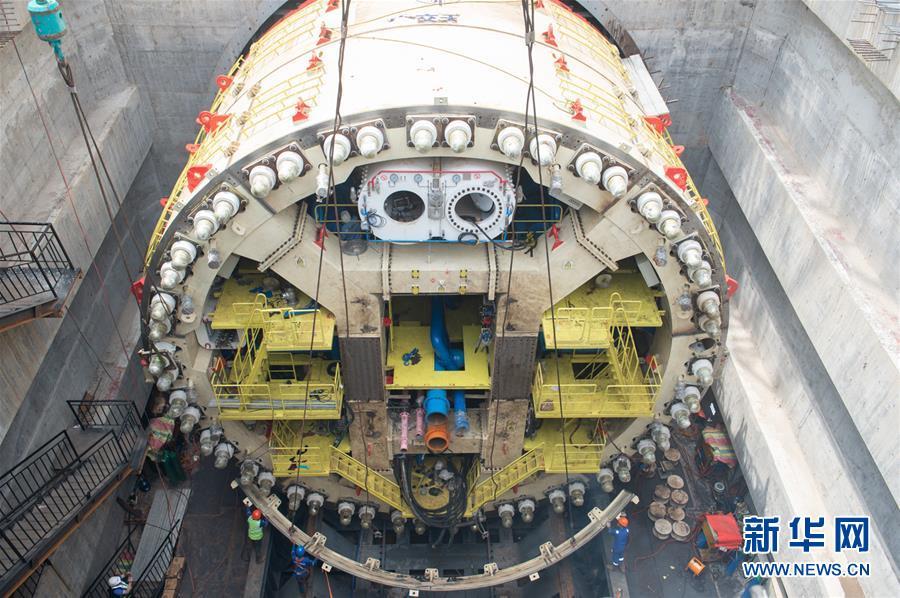
Intensive work to build the No 1 tunnel of the Jakarta-Bandung high-speed railway station Halim is underway round-the-clock to assemble a huge tunnel boring machine on March 20, 2019. (Photo/Xinhua)
Infrastructure projects
Railways:
Jakarta-Bandung high-speed rail, Indonesia
The 142-km Jakarta-Bandung high-speed railway, connecting the Indonesian capital Jakarta with Bandung, is now under construction, after China and Indonesia signed an agreement in October 2015 to establish a joint venture to build and operate it.
As a part of the Belt and Road Initiative projects in Indonesia, the high-speed railway is the first to use China's high-speed railway standards, technologies and equipment on a foreign line.
It being constructed and operated by a China-Indonesia consortium of firms led by China Railway Corp and Indonesian state-owned PT Wijaya Karya Tbk, and is to be funded mainly by loans from China Development Bank.
The high-speed rail, the first of its kind in Southeast Asia, will have a maximum design speed of 350 km/h and is capable of transport passengers and goods within 45 minutes between Jakarta and Bandung.
![A train stops at the Idu Railway Station in Abuja, Nigeria on July 26, 2016. The Abuja?Kaduna Railway is the first standard gauge railway in Nigeria. [Photo/Xinhua]
Abuja?Kaduna Railway, Nigeria
The Abuja?Kaduna Railway, as the first segment of the Lagos?Kano standard gauge project, the first standard gauge railway in Nigeria and West Africa, was officially inaugurated and started commercial operation on July 26, 2016.
The railway, constructed by China Civil Engineering Construction Corporation, is the first overseas railway fully adopting the Chinese railway standard. Spanning 186.5 kilometers, it alleviates traffic tension, improves the investment environment and promotes the coordinated development of regional economy and society.
By Jan. 11, the train service had delivered 1.23 million passengers and had safely operated for 900 days without any major accident recorded since its inception.](http://www.ecns.cn/hd/2019/04/22/492071e6cff64b62a0988aef33df02df.jpg)
A train stops at the Idu Railway Station in Abuja, Nigeria on July 26, 2016. The Abuja?Kaduna Railway is the first standard gauge railway in Nigeria. [Photo/Xinhua]
Abuja?Kaduna Railway, Nigeria
The Abuja?Kaduna Railway, as the first segment of the Lagos?Kano standard gauge project, the first standard gauge railway in Nigeria and West Africa, was officially inaugurated and started commercial operation on July 26, 2016.
The railway, constructed by China Civil Engineering Construction Corporation, is the first overseas railway fully adopting the Chinese railway standard. Spanning 186.5 kilometers, it alleviates traffic tension, improves the investment environment and promotes the coordinated development of regional economy and society.
By Jan. 11, the train service had delivered 1.23 million passengers and had safely operated for 900 days without any major accident recorded since its inception.
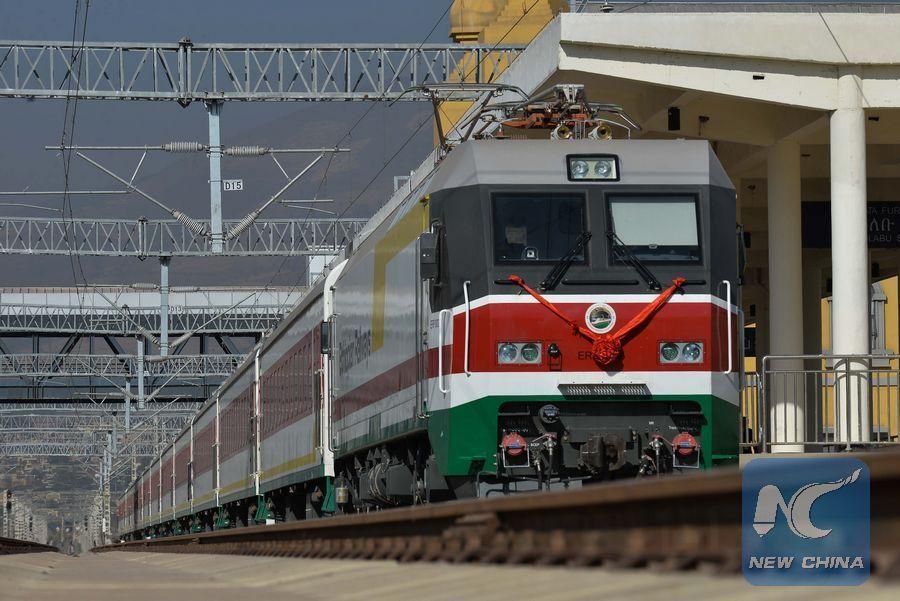
A photo taken on Jan 1, 2018 shows a train at the Lebu station in Addis Ababa, capital of Ethiopia. The Chinese-built 756-kilometer electrified rail project connecting landlocked Ethiopia to Djibouti officially started commercial operations on Jan 1, 2018. (Photo/Xinhua)
Ethiopia-Djibouti Railway
The Ethiopia-Djibouti Railway, the first electrified railway in East Africa with built on Chinese standards and with Chinese equipment, officially commenced commercial operations in January 2018.
With a length of 751.7 kilometers, a design speed of 120 kilometers per hour, 45 stations and total investment of about $4 billion, the railway was jointly constructed by China Railway Group Ltd and China Railway Construction Corp Ltd and is the first with a full industrial chain Chinese enterprises have built overseas.
The railway reduces travel time from the Djibouti port to Addis Ababa to less than 12 hours from the previous three days.
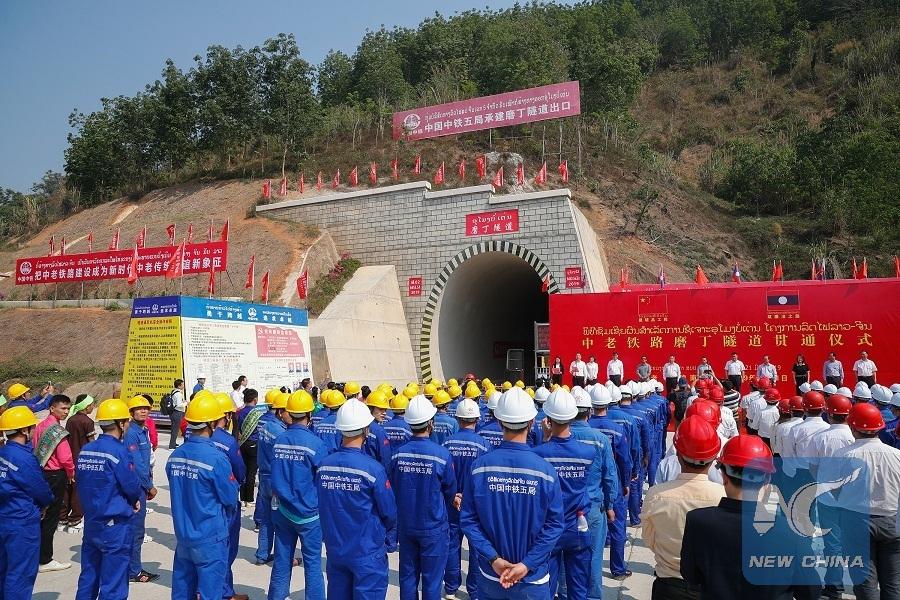
A photo taken on March 21, 2019 shows the drilling-through ceremony of Boten Tunnel along the China-Laos railway in Boten, Laos. (Photo/Xinhua)
China-Laos Railway
The 414-km China-Laos Railway runs from Boten, the northern Lao town bordering Southwest China's Yunnan province, to Vientiane, capital of Laos, with an operating speed of 160 km per hour.
The electrified passenger and cargo railway, which started construction in December 2016 with the full application of Chinese management standards and technical standards, is scheduled to be completed and open to traffic in December 2021.
It is a strategic project aligning the China-proposed Belt and Road Initiative and Laos' strategy to convert from a landlocked country to a land-linked hub.
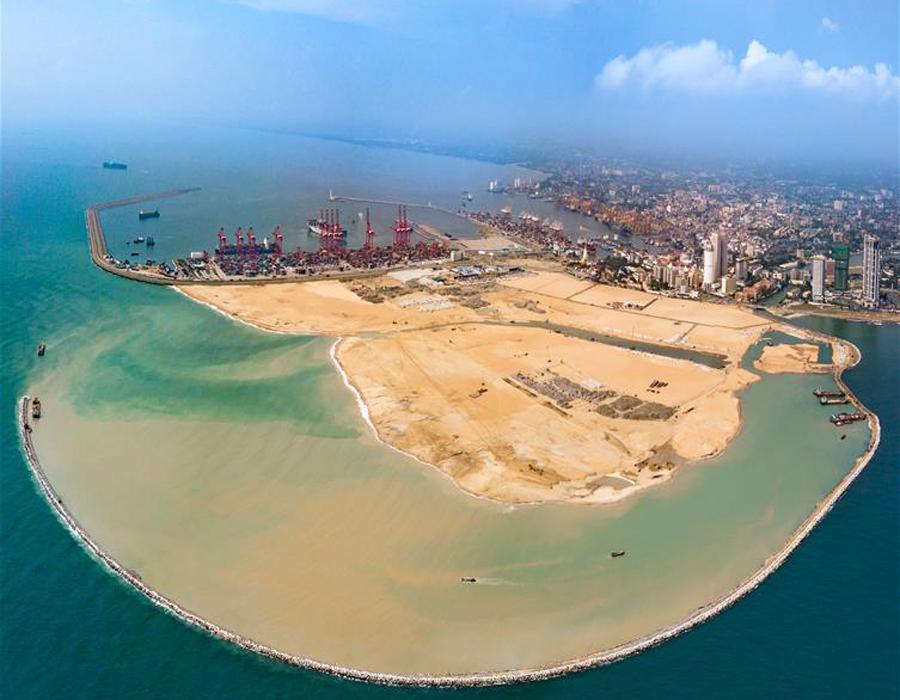
The Colombo Port City is seen under construction in Colombo, Sri Lanka on April 22, 2018. (Photo/Xinhua)
Ports:
Colombo Port City, Sri Lanka
The China-funded Colombo Port City, the largest project between China and Sri Lanka under the Belt and Road Initiative, completed land reclamation of 269 hectares in January.
In addition, hydro-structure construction will be completed by the middle of this year. The port city's municipal facilities construction is expected to be completed in July 2020. At the same time, investment promotion of the city is also being carried out.
The $1.4 billion project, co-developed by Sri Lanka's government and China Communication Construction Co Ltd, is expected to bring 83,000 jobs to locals in 20 years.
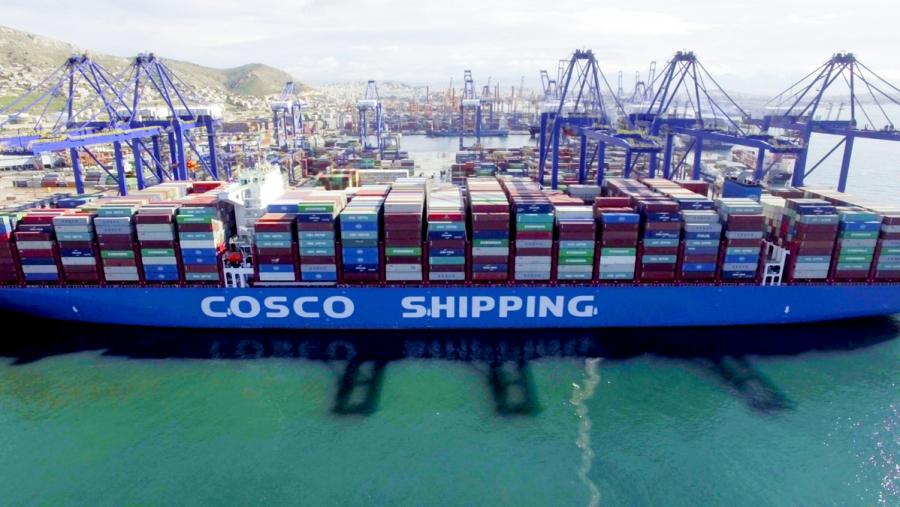
The Cosco Shipping Taurus docks at Piraeus on Feb. 26, 2018. (Photo/Xinhua)
Piraeus Port, Greece
Piraeus Port is the largest port in Greece. On Aug. 10, 2016, COSCO Shipping (Hong Kong) Co Ltd, a subsidiary of China COSCO Shipping Group, became a controlling shareholder of the port and started operating the facility.
Around 290 million euros are expected to be invested by the company for the expansion of a cruise terminal, improvement of a ship repair wharf and a new multi-storey garage of roll-on roll-off ship wharf.
The port, as an important meeting point of the Silk Road Economic Belt and the 21st Century Maritime Silk Road, has become one of the fastest-growing container ports in the world in recent years.
Under the joint operation of Chinese and Greek enterprises, the port's infrastructure conditions and operational capabilities have been greatly improved. The freight hub has become increasingly prominent, not only providing more jobs, but also promoting local economic development and becoming a model of win-win cooperation under the Belt and Road Initiative.
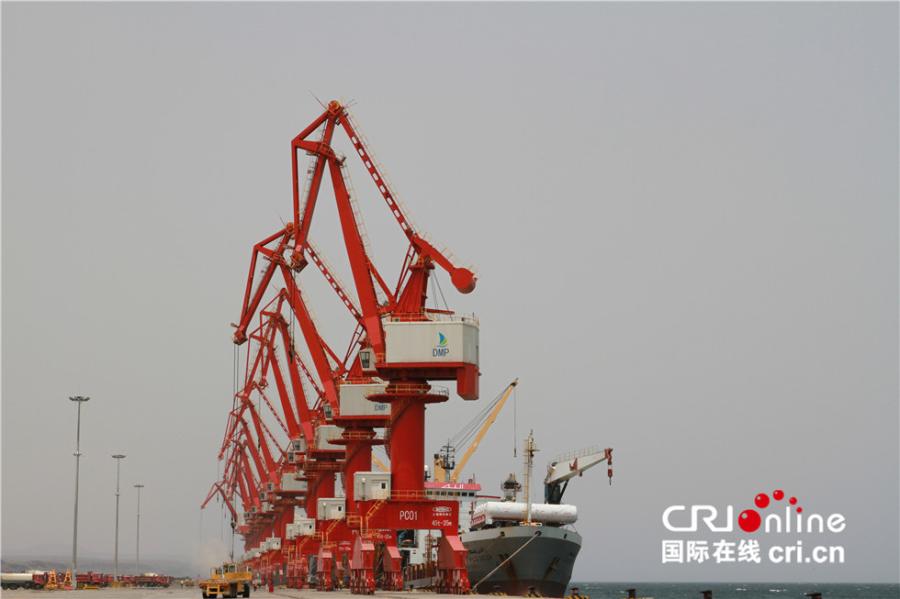
A view of the Doraleh Multi-Purpose Port in Djibouti. (Photo/cri.cn)
Doraleh Multi-Purpose Port, Djibouti
The Doraleh Multi-Purpose Port in Djibouti, constructed by China State Construction Engineering Corp and partially owned and operated by DP World and China Merchants Holdings, opened on May 24, 2017.
The port, with a contract amount of $421.7 million and a designed handling capacity of 7.08 million tons a year, is CSCEC's first hydraulic project in Africa. All the port's terminals have direct access to the Addis Ababa?Djibouti Railway, which provides landlocked Ethiopia with access to the sea.
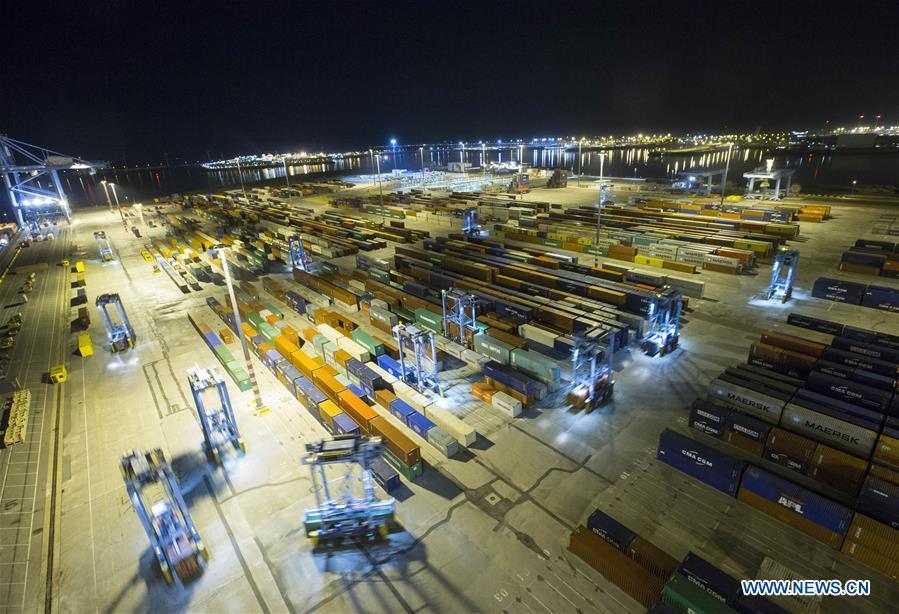
A photo taken on Oct. 15, 2018 shows Zeebrugge Terminal in Zeebrugge, Belgium. (Photo/Xinhua)
Zeebrugge Terminal, Belgium
China's COSCO Shipping signed an agreement with the Port of Zeebrugge on Jan 22, 2018 for a 50-year concession on the CSP Zeebrugge Terminal.
As the second-largest port in Belgium, the Port of Zeebrugge is a natural deepwater harbor and has a good network of road and rail connections across Europe. It is expected to be the main northern European hub for China's Belt and Road Initiative, with Piraeus Port in Greece the southern hub.
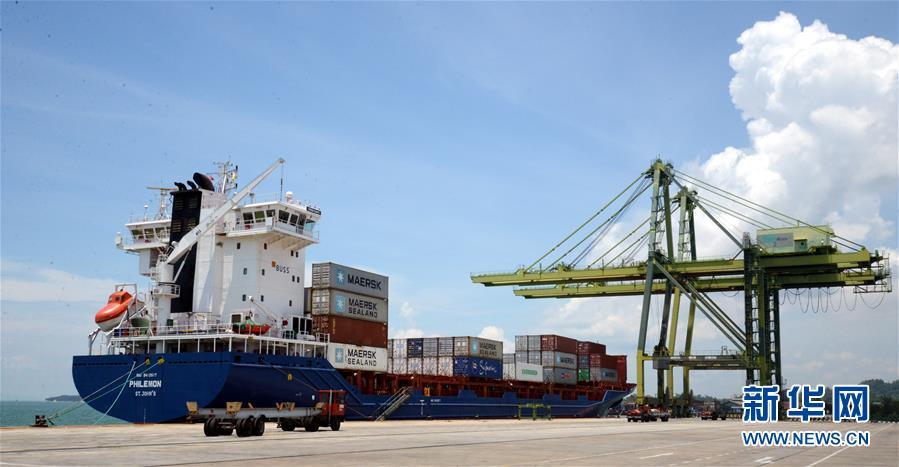
A photo taken on April 17, 2015 shows a ship loaded with containers at the container terminal of the Muara Port, the only deepwater port in Brunei. (Photo/Xinhua)
Muara Port, Brunei
Muara Port has the largest container terminal and is also the main international trade passage for Brunei. In February 2017, the container terminal of the port was handed over to the Muara Port Company Sdn Bhd, a joint venture established by China's Beibu Gulf Port Group and Brunei's Darussalam Asset.
Muara Port is the only public dock in Brunei and is an important part of the construction of the Guangxi-Brunei Economic Corridor. In the first 10 months of 2018, Muara Port handled 93,257 TEUs (twenty-foot equivalent units), a year-on-year increase of 7 percent.
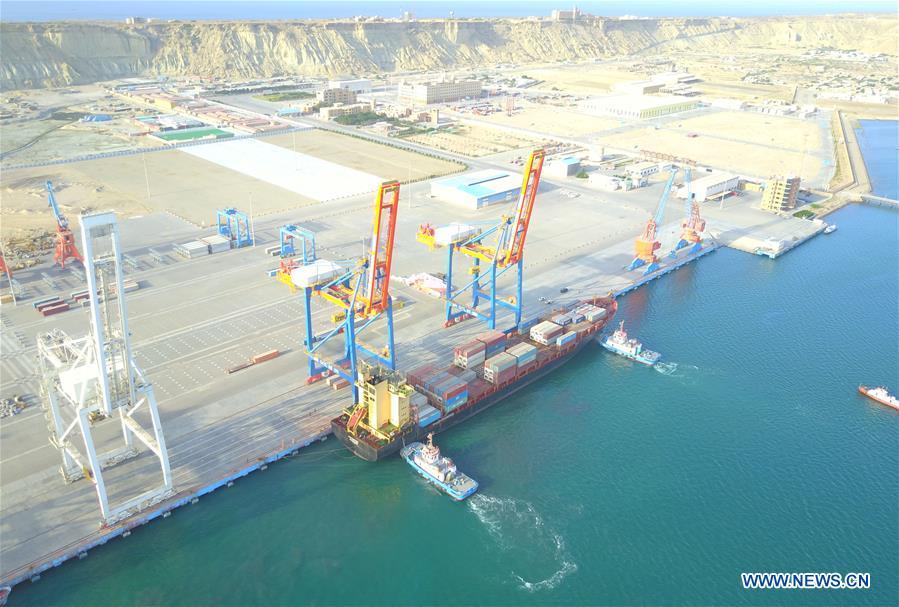
A photo taken on March 24, 2018 shows the Gwadar port of Pakistan. (Photo/Xinhua)
Gwadar Port, Pakistan
From a small, remote and underdeveloped fishing village located in the Arabian Sea, Pakistan's Gwadar Port now has a fully functional port terminal, a business center and a free zone.
The port, which opened on Nov 13, 2016, has been operated by China Overseas Port Holding Company since 2013. The Gwadar Port is a flagship China-Pakistan Economic Corridor project under the Belt and Road Initiative.
According to the COPHC, dozens of companies in different businesses such as hotels, banking, logistics, food, steel, fish processing and renewable resources have entered the free zone.
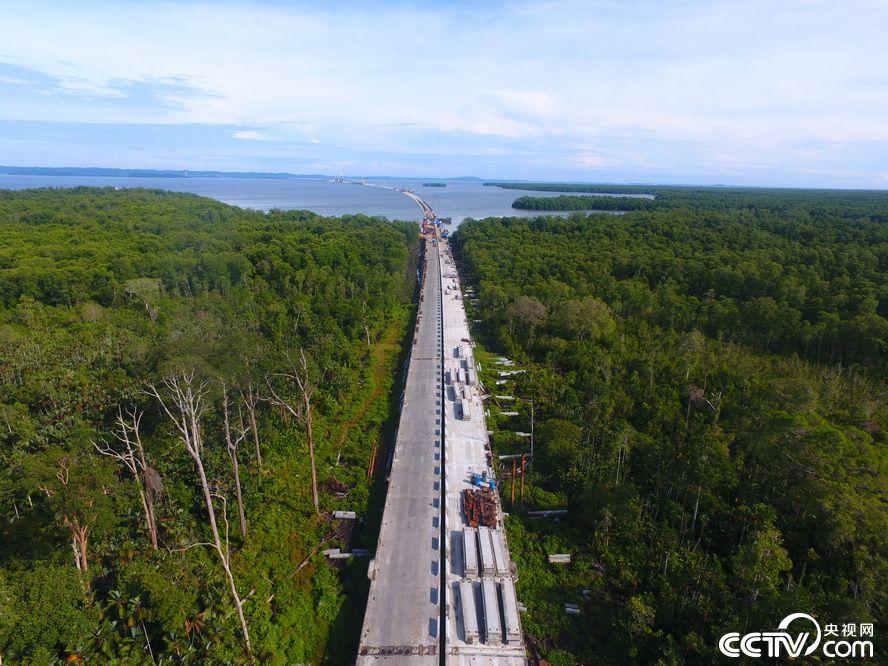
An aerial photo of the CC4 contract of the Temburong Bridge under construction. (Photo/cctv.com)
Temburong Bridge, Brunei
The Temburong Bridge, the largest infrastructure project in Brunei's history, will become the country's longest sea-crossing bridge with a total length of about 30 km. It is scheduled to open to traffic by the end of November 2019.
The CC4 section of the bridge is constructed by China State Construction Engineering Corp. At around 11.6 km of the 11.8 km-long section will be a land viaduct traversing the mangrove swamp of the Labu Forest Reserve, the company has established a set of strict safety and green construction evaluation systems to meet the high demand for environmental protection and cope with unprecedented difficulty in construction.
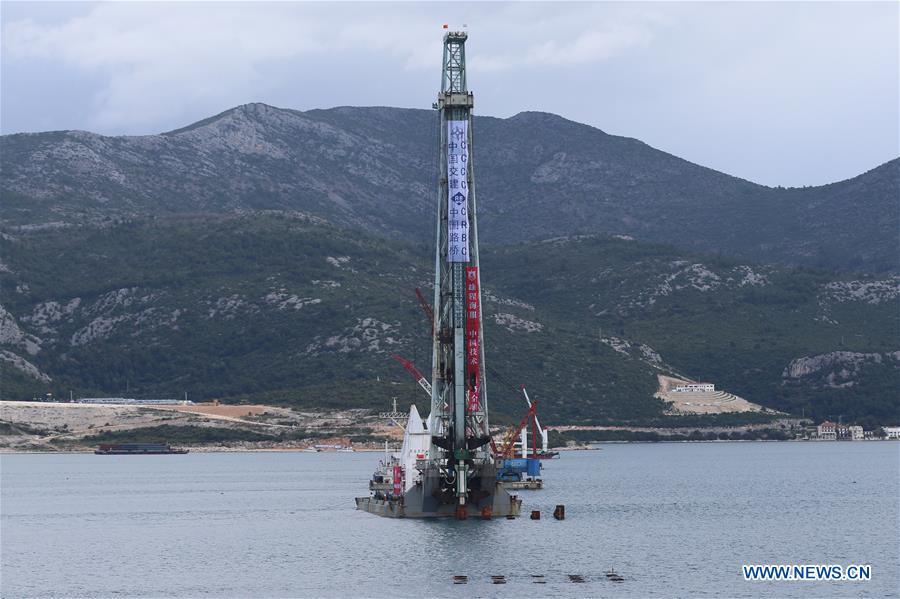
The construction site of the Peljesac Bridge on the Peljesac Peninsula in southern Croatia on April 11, 2019. (Photo/Xinhua)
Peljesac Bridge, Croatia
One of the biggest infrastructure projects in Croatia's history, the Peljesac Bridge is designed to link the mainland of Croatia with its southernmost Dubrovnik-Neretva county.
A Chinese consortium led by China Road and Bridge Corporation won the bid for the first phase of the Peljesac Bridge and its access roads in January 2018.
The project, whose estimated value is over 400 million euros ($485 million), will be partially sponsored by European Union funds. Croatian Prime Minister Andrej Plenkovic said in April the 2.4-km-long and 55-meter-high bridge is highly rated by the Croatian people.
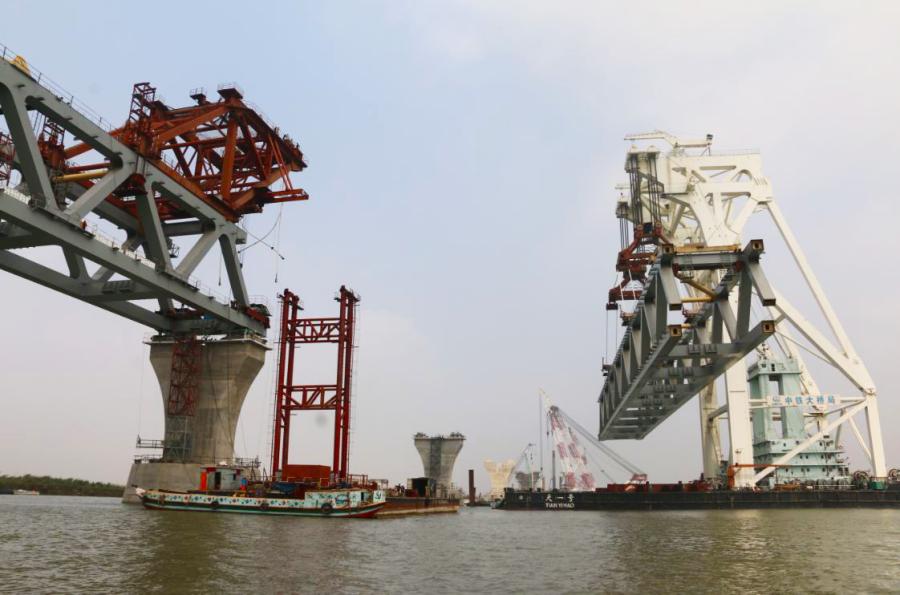
Construction of the core part of the Padma Bridge over the Padma River in Bangladesh is underway by China Railway Major Bridge Engineering Group Co Ltd on Feb. 21, 2019. (Photo/Xinhua)
Padma Bridge, Bangladesh
The Padma Bridge, 25 meters in width and 10 km in length, will be built over the Padma River, one of the three major rivers in Bangladesh.
In June 2016, China Railway Major Bridge Engineering Group Co Ltd was awarded a $1.55-billion contract by the Bangladeshi government to build the core structure of the bridge.
The bridge is the country's largest infrastructure project, as well as the largest foreign bridge project undertaken by Chinese companies in terms of total cost.
Once completed, travel time between the capital, Dhaka, and the southern city of Khulna will be shortened to about three hours from 13 hours.
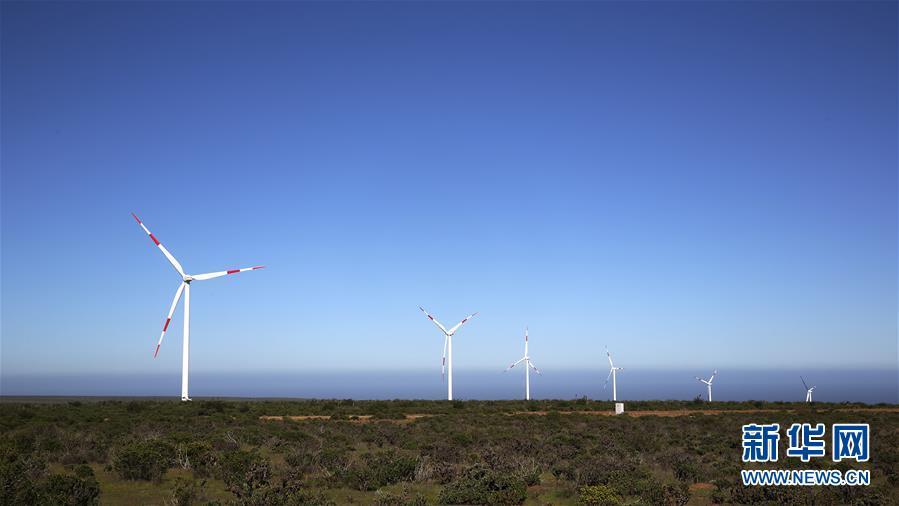
A view of the Punta Sierra wind farm in the outskirts of Ovalle, a city in the Coquimbo Region of Chile, on Aug. 24, 2018. (Photo/Xinhua)
Industrial projects
Punta Sierra wind farm, Chile
With 32 turbines by the blue sea, the Punta Sierra wind farm has been in operation since Feb 4, 2018.
It is the first Pacific Hydro wind farm in Chile and the first wind farm invested in by China in the South American country.
The $150 million project, financed and constructed by China State Power Investment Corporation, has an installed capacity of 82 MW and will generate about 282 GWh/year, which can meet electricity demands for 130,000 households and reduce carbon emissions by 157,000 tons per year.
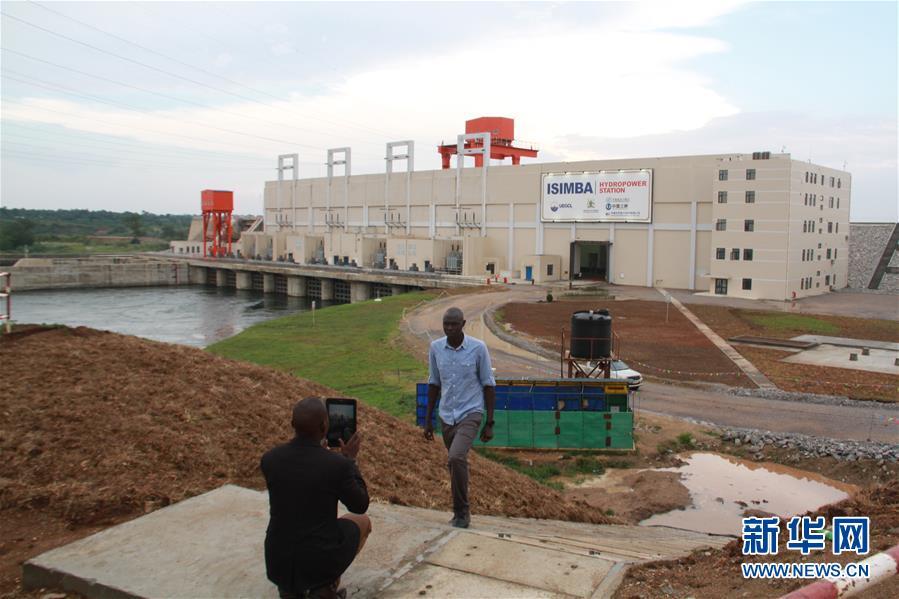
A photo taken on March 21, 2019 shows the Chinese-built Isimba hydropower station on the Victoria Nile in central Uganda. (Photo/Xinhua)
Isimba hydropower station, Uganda
Construction on the Isimba hydropower station in Uganda was completed on March 21. The project cost an estimated $568 million, with 85 percent coming from a concessional loan provided by the Export-Import Bank of China. Uganda provided the rest of the funding.
Built by China International Water & Electric Corp, the 183 MW power plant is the third-largest power station in Uganda, increasing the country's power generation capacity from 984 to 1167 MW.
The power plant is intended to address a power shortage that experts say affects Uganda's economic development. Construction started in 2015 and hired more than 3,000 workers, of whom 85 percent were Ugandans.
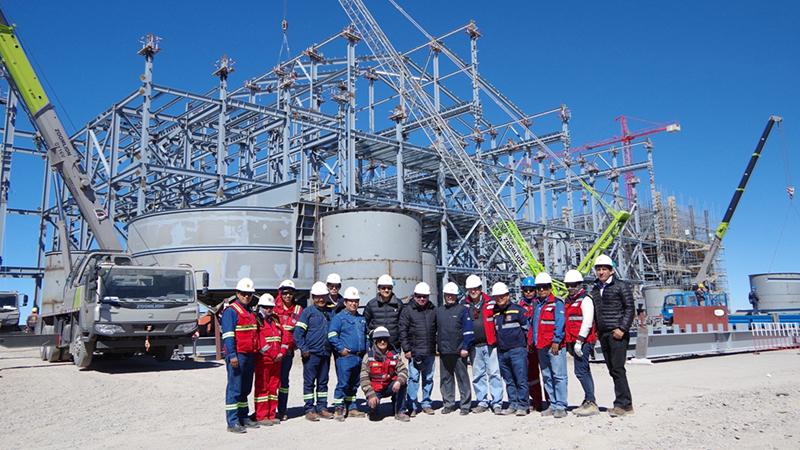
A photo of the Uyuni potash plant under construction in Uyuni, Bolivia on April 20, 2017. (Photo/sinomach.com.cn)
Uyuni 350KTPA Potash Plant, Bolivia
The Uyuni 350KTPA Potash Plant in Bolivia, constructed by China CAMC Engineering, started operations on Oct 7, 2018. It is the third-largest potash plant in South America, and the completion of this plant marks the first time in the history of the Bolivian people to own their own potash plant.
In May 2015, the project bid was successfully won by China CAMC Engineering for a total of 1.2 billion Boliviano ($170 million).

The China-Belarus Industrial Park is 25 km from Minsk, Belarus, and has attracted global investors and extended its influence to nearby regions. (Photo/Xinhua)
Industrial park project
China-Belarus Industrial Park, Belarus
The China-Belarus Industrial Park, located 25 km from Minsk and covering an area of 91.5 square kilometers, is the first special economic area in Belarus and the largest intergovernmental cooperation project between China and Belarus.
The industrial park is stepping up efforts to attract more global investors, with 43 companies registered by the end of February.
Among the 43 companies, 26 are from China, 10 from Belarus, and seven from other countries, like the United States and Russia. The companies have signed agreements to make total investments of more than $1 billion in the park.
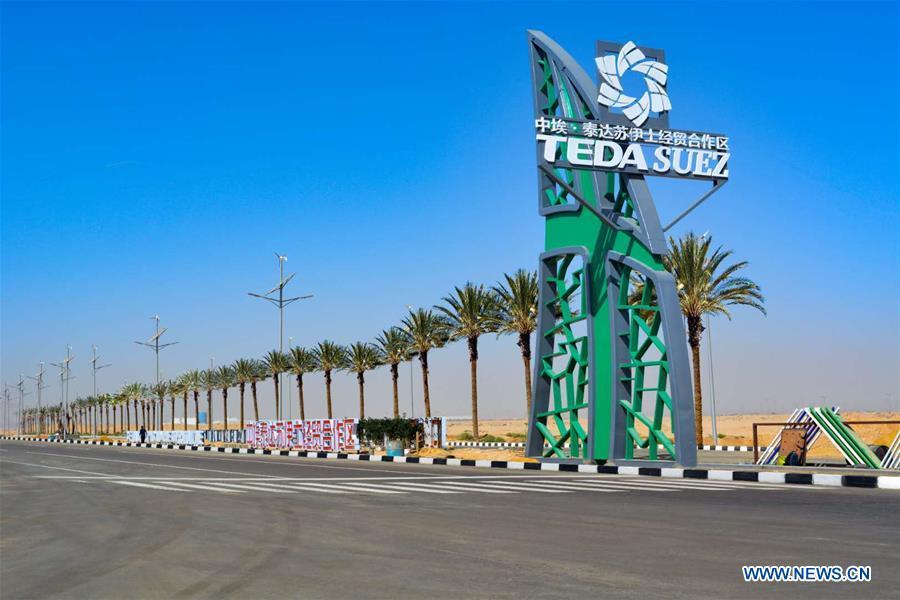
A photo taken in December 2018 shows a sign for the China-Egypt Suez Economic and Trade Cooperation Zone, located some 120 km east of Cairo near the Suez Canal. (Photo/Xinhua)
Economic and Trade Cooperation Zone
China-Egypt Suez Economic and Trade Cooperation Zone
The China-Egypt Suez Economic and Trade Cooperation Zone, located in the Ain Sokhna district of the Suez province east of Cairo, has become a landmark project for China and Egypt's cooperation under the Belt and Road Initiative.
The zone, officially starting construction over a decade ago, is operated by China-Africa TEDA Investment Co Ltd. It has attracted nearly 80 enterprises with investment of more than $1 billion, directly offered jobs to over 3,500 people and created 30,000 job opportunities through the industries gathered there.
In January 2016 the second phase of the zone, which covers an area of 6 square kilometers, was inaugurated. As of February infrastructure construction for 2 square km of the second phase has finished, and that eight industry-leading enterprises are already onboard with an investment of $200 million.
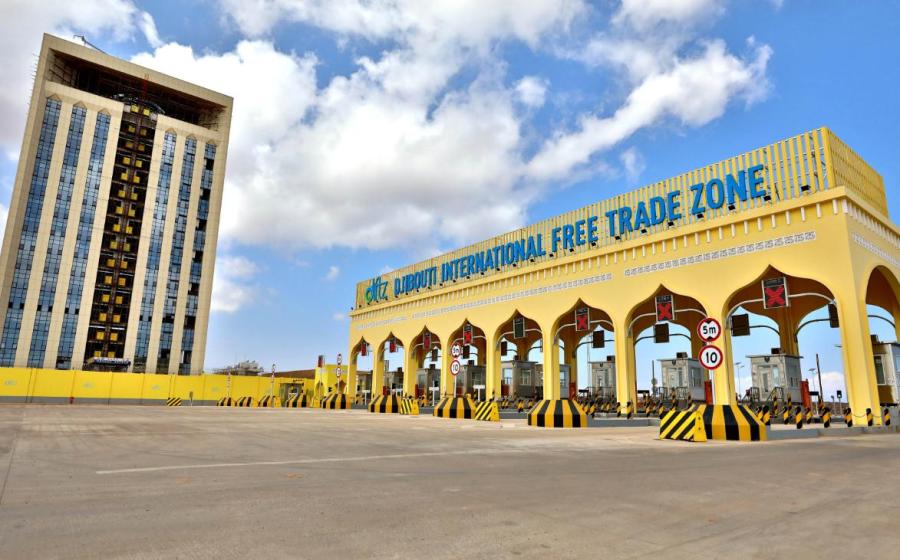
A view of the Djibouti International Free Trade Zone during the zone's inauguration ceremony in Djibouti on Dec. 9, 2018. (Photo/Xinhua)
International Free Trade Zone
Djibouti International Free Trade Zone, Djibouti
The China-funded Djibouti International Free Trade Zone, which started construction in January 2017, opened on July 5, 2018.
Covering an area of 48.2 sq km, the zone is operated by a joint venture with investment by Chinese enterprises, including China Merchants Holdings and Dalian Port Corp Ltd, as well as the Djibouti Ports and Free Zone Authority.
More than 20 enterprises from the commerce, logistic, processing sectors have signed letters of intent to register with the FTZ, as infrastructure in the first phase of the FTZ, which covers an area of 6 sq km, has been basically completed.
The FTZ is expected to become a crucial junction linking other African countries involved in the Belt and Road Initiative, and make Djibouti, the small northeast African country, a marine logistics hub linking Africa, Asia and Europe.










